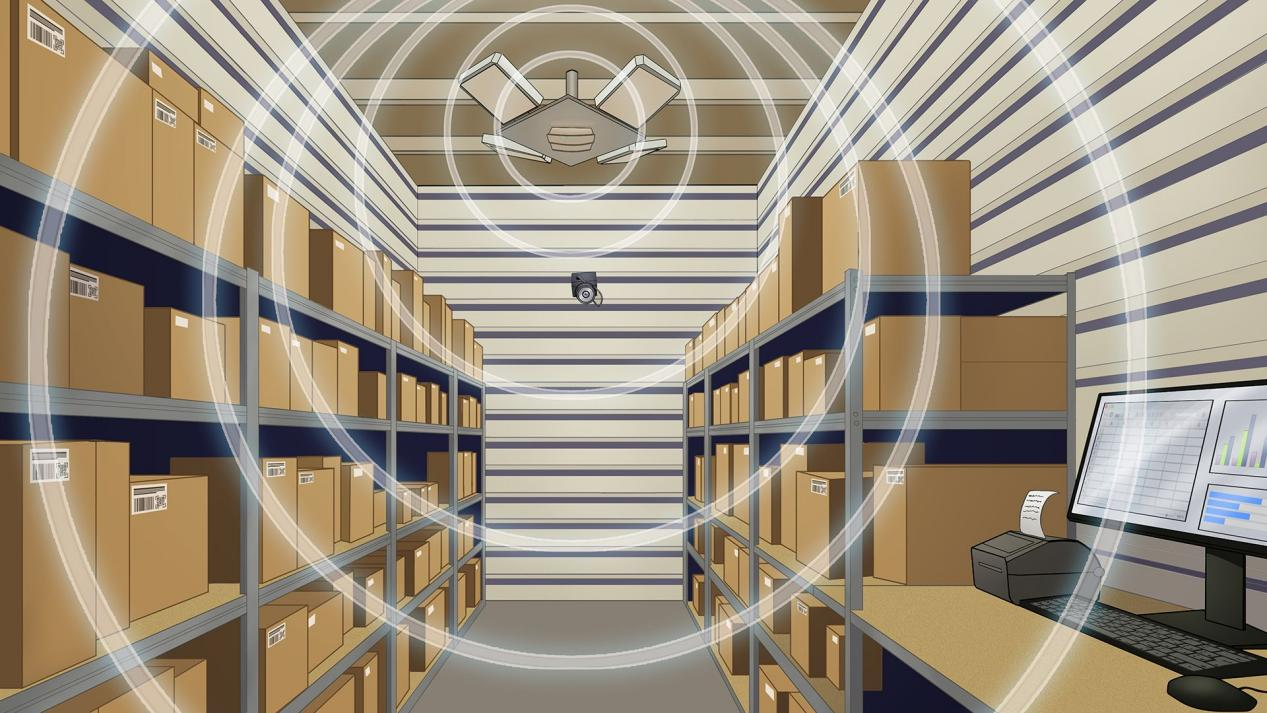As the Internet of Things technology becomes more and more mature, RFID products are applied in more fields. International logistics giants DHL, FedEx, UPS, etc. are actively trying and have successfully applied RFID to more of their logistics supply chain links, including package tracking, real-time data collection, warehouse management, smart logistics, etc., to achieve real-time monitoring of the entire process , improve the transparency and automation of the supply chain, and further enhance its logistics capacity and customer service level.
1. Growth space of express logistics industry
It is a great challenge for international logistics giants to handle tens of millions of packages on average every day. How to continuously improve service efficiency while ensuring accuracy is the key to improve customer satisfaction in the logistics industry.
At present, the mainstream information collection system in the logistics industry mostly relies on barcode technology. Relying on the paper label of the barcode on the package, the logistics operator can identify, sort, store and complete the delivery process. However, the limitations of barcode technology, such as the need for visual assistance, the inability to scan in batches, the limited storage information, and the inability to read and identify after damage, and the lack of durability, make express physics and enterprises begin to pay attention to RFID technology. The advantages of automatic identification and batch reading of RFID technology are emerging in this area. The express industry has seen room for growth. RFID technology is increasingly used in express sorting, warehousing and outbound, delivery, vehicle and asset management and other applications in logistics services.
2. RFID management of goods in and out of warehouse
Automation and informatization are the mainstream trends in the logistics and express industry. By pasting RFID electronic labels on the goods, the goods information is automatically collected and recorded from the beginning of picking up. Through Bluetooth wearable RFID devices, such as gloves, wristbands, etc., the pickup staff can easily scan goods and collect goods information. Upon arrival at the logistics transfer center, the goods will be temporarily stored in the transfer warehouse. At this time, the system will automatically allocate the storage area of goods according to the information collected by RFID, which can be accurate to the physical layer of the shelf. Each physical layer is equipped with RFID electronic tags. Through wearable RFID equipment, the goods information is automatically identified and fed back to the system to confirm that the correct goods have been placed in the correct area, so as to ensure the accuracy. By installing RFID electronic tags on the delivery vehicle, each cargo is bound to the corresponding delivery vehicle. When the goods are taken out of the shelf, the system will send the delivery vehicle information to the pickup personnel to ensure that the correct goods are allocated to the correct vehicles.
3. Application of RFID in logistics sorting
By pasting RFID electronic labels on the goods and combining with the RFID read-write equipment installed at the sorting port, when the goods on the conveyor belt are close to the read-write equipment, the equipment senses the RFID electronic label signal and collects the stored information, and then uploads the label information to the background supporting system. The system will control the goods to come out of the corresponding sorting port, thus realizing automatic sorting, saving time, and improving accuracy and accuracy.
4.Application of RFID in goods delivery
Each delivery vehicle is equipped with a physical shelf inside. RFID electronic labels are deployed on each shelf. The deliverer can know which layer the goods should be placed on by scanning the RFID electronic labels on the goods. When the goods are placed on the correct shelf layer, the system automatically collects the goods data to ensure the correctness again. The integration of RFID into delivery trucks can achieve faster cargo handling. Real-time visible cargo information ensures the accuracy of cargo delivery and significantly improves the punctuality of delivery. In addition, fuel consumption and carbon dioxide emissions are saved.
5. Application of RFID in vehicle management
In addition to basic business process processing, RFID can also be used for the management of work vehicles. Express companies often want to track the operation trucks driving out and in from the logistics center every day for safety reasons. Each working vehicle is equipped with RFID electronic tags. When the vehicle passes through the exit and entrance, the center can automatically monitor the vehicle’s access through the installed RFID reading and writing equipment and camera. At the same time, it greatly simplifies the driver’s manual checkout and check-in process.
Tracking a large number of cartons is a very complex process. Traditionally, this is a manual process involving human, in which the possibility of error is much greater. RFID has largely alleviated this situation.
RFID brings the most popular “end to end product visibility” in the field of logistics and supply chain management. This real-time and updated information helps to maximize efficiency, reduce operating costs and improve customer satisfaction. As suppliers gain more cost-benefit ratio, the penetration rate of such technologies will increase.
Post time: Feb-24-2023


